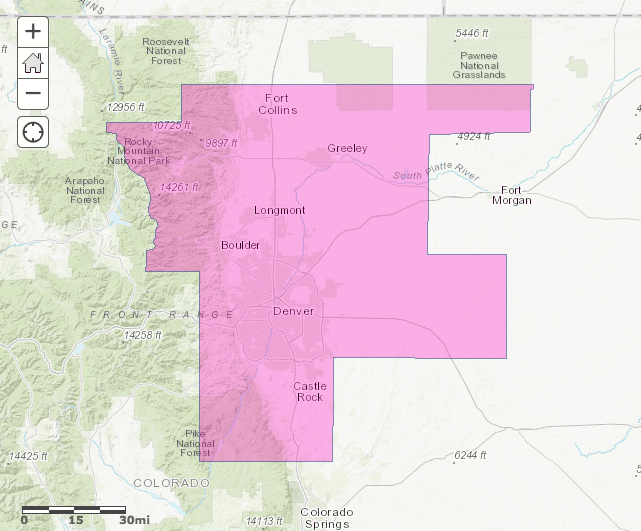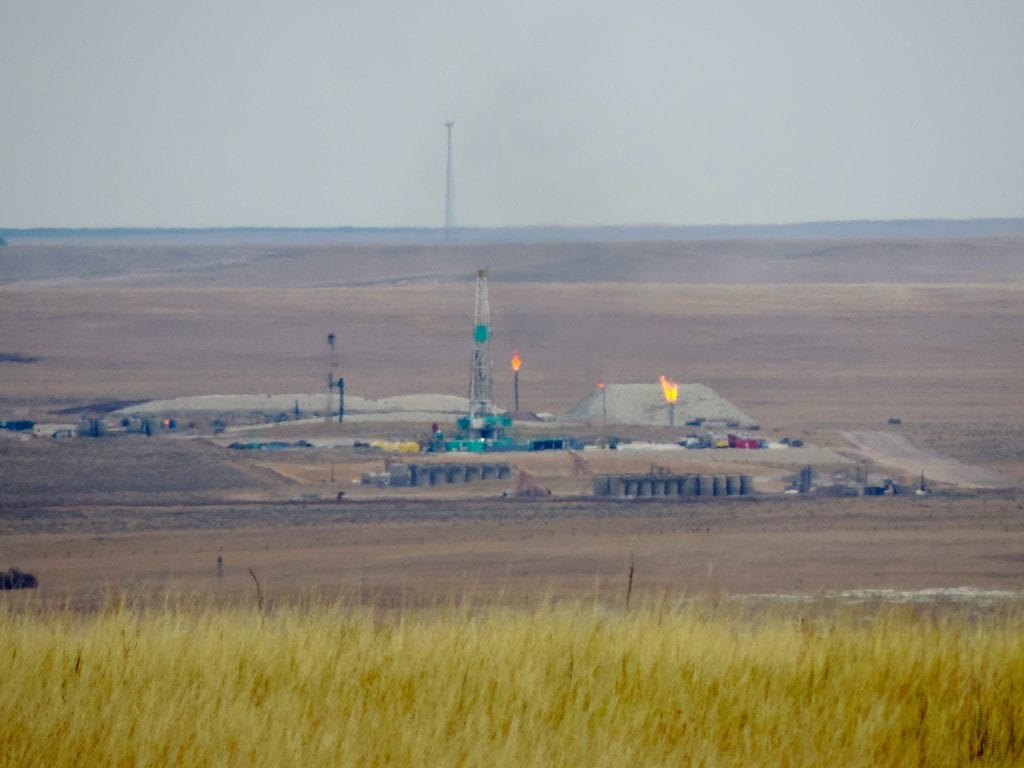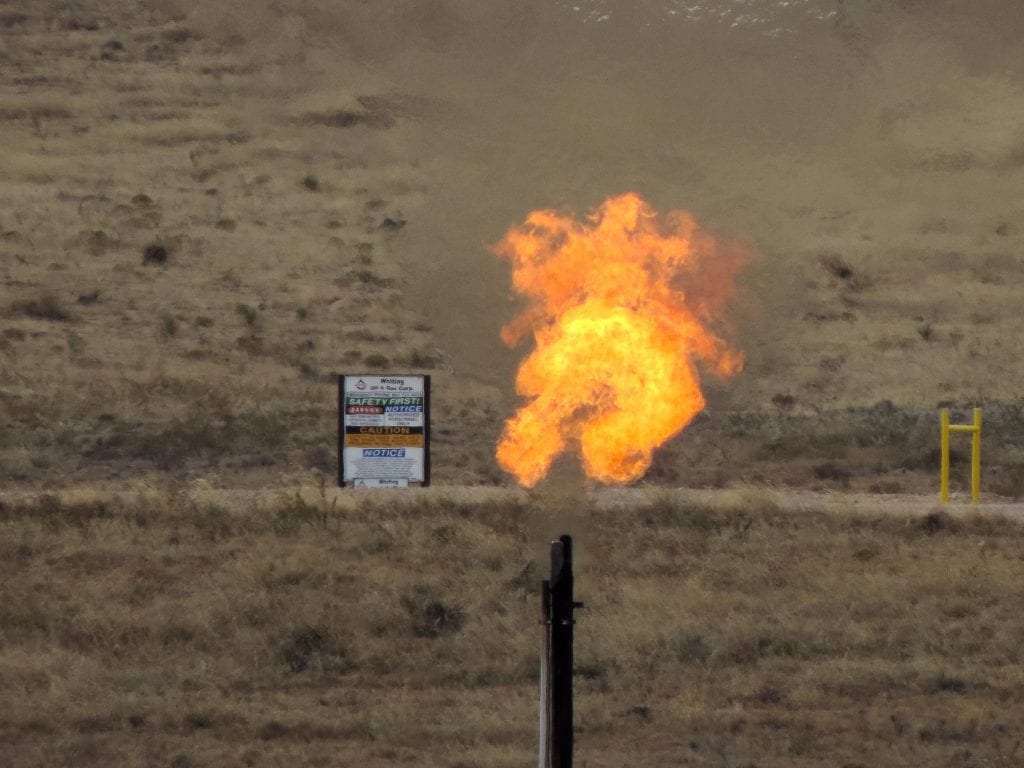
Flaring at an oil well on the Pawnee National Grassland.
As smoggy skies settle in this summer, WildEarth Guardians is stepping up to confront the terrible toll the oil and gas industry takes on clean air in the American West.
Front and center are our efforts to rein in smog forming pollution from fracking in the Denver Metropolitan Area, a region that has been violating legal limits on smog pollution for way too long.
Just last week, we filed an opening brief in a lawsuit challenging the U.S. Bureau of Land Management for auctioning off thousands of acres of public lands in the region, mostly in and near the Pawnee National Grassland north of Denver.
Under the Clean Air Act, federal agencies are prohibited from taking any action that would worsen air pollution in areas failing to meet clean air limits.
In spite of this, the Bureau of Land Management auctioned off more than 36,000 acres of public lands for fracking, even while acknowledging that it would worsen Denver’s smog violations.
This case could not be more critical for public health and clean air in the Denver Metro Area, where the vast majority of Colorado’s population lives.
In 2007, this region (including all of Adams, Arapahoe, Boulder, Broomfield, Denver, Douglas, and Jefferson Counties, and most of Larimer and Weld Counties) was designated “nonattainment” because of violations of limits on ground-level ozone pollution, the key ingredient of smog.
While the nonattainment designation was supposed to lead to a clean up of the region’s smog, sadly, the clean air violations have only worsened in the Denver Metro Area. The reason: Increasing air pollution from ramped up fracking.
Ozone isn’t released directly, but forms when two key pollutants–volatile organic compounds and nitrogen oxides–react with sunlight. Volatile organic compounds are essentially industrial vapors (think smelly gas stations), while nitrogen oxides are a byproduct of combustion (tailpipes, smokestacks, etc.).
It surprises people to learn that the oil and gas industry is a major source of volatile organic compounds and nitrogen oxides Denver Metro Area, as well as a major contributor to the region’s smog problem.
In fact, according to the State of Colorado, the oil and gas industry is responsible for 44% of all volatile organic compound emissions (more than all cars and trucks) and more than a quarter of all nitrogen oxide emissions in the Denver Metro Area.
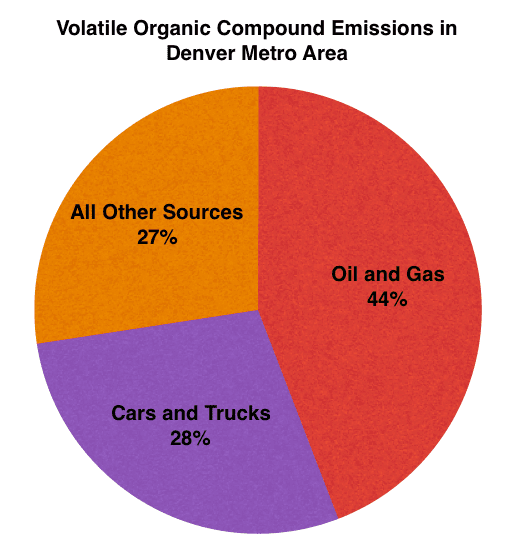
A recent peer-reviewed study by the National Oceanic and Atmospheric Administration even confirmed that these emissions contribute on average to nearly 20% of the region’s smog, making the oil and gas industry “an important contributor to the region’s chronic ozone problem.”
These emissions come from myriad sources, including from leaks, venting of gases at wells, flaring, compressor engines, drilling rigs, and more. To put it simply, oil and gas operations are incredibly messy. Even where you can’t see the pollution with your naked eye, it is being released.
Just look at what the group Earthworks was able to expose at oil and gas sites in the Denver Metro Area using infrared cameras.
That the oil and gas industry is such a major contributor to the region’s smog is a function of its immense footprint. In total, there are more than 25,000 oil and gas wells in the area, as well as miles of pipelines, thousands of storage tanks, countless processing facilities, and other infrastructure developments.
While one well may be a relatively small source of air pollution, cumulatively, the entire footprint of the industry is massive.
See for yourself the map below showing producing oil and gas wells in the Denver Metro ozone nonattainment area.
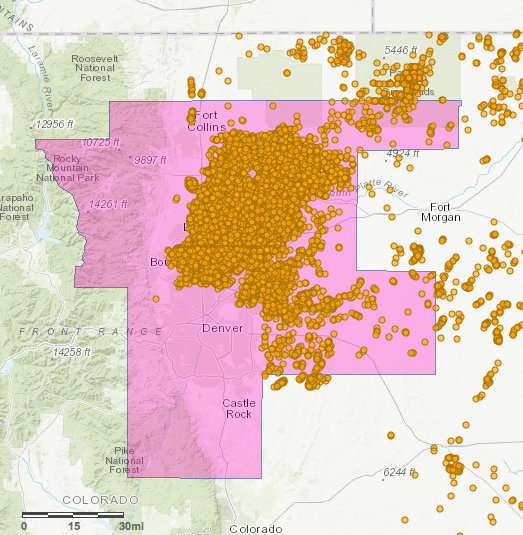
While some steps have been taken to curb emissions from the oil and gas industry in the Denver Metro Area, these cuts simply haven’t kept pace with development. With a boom in horizontal drilling and fracking in the region–especially in and near the Pawnee National Grassland–air pollution has just continued to soar.
Perhaps not surprisingly, even after supposed curbs on oil and gas emissions, smog levels continue to climb in the Denver Metro Area.
While our legal efforts aim to overturn the Bureau of Land Management and take back the 36,000 acres of public lands that were illegally auctioned off to the oil and gas industry, more importantly, our goal is to compel the federal government to start taking some responsibility for clean air. Here, success is critical.
Because it’s not just the Denver Metro Area at stake. Throughout the American West. Bureau of Land Management-approved fracking is pushing smog to unhealthy extremes, threatening public health on a massive scale.
With President Trump and his Secretary of the Interior, Ryan Zinke, moving to pull out all the stops for the oil and gas industry to be able to frack our public lands at will, it’s more important than ever to enforce our legal right to clean air.

